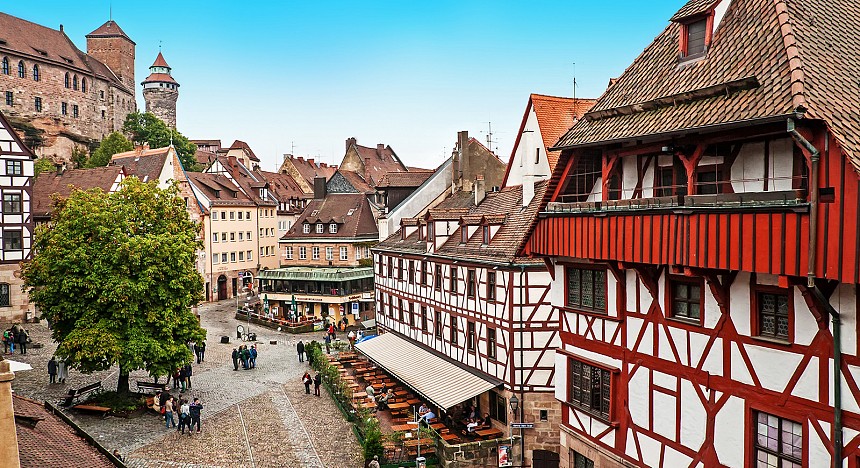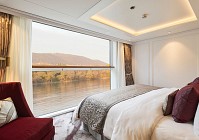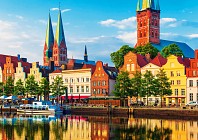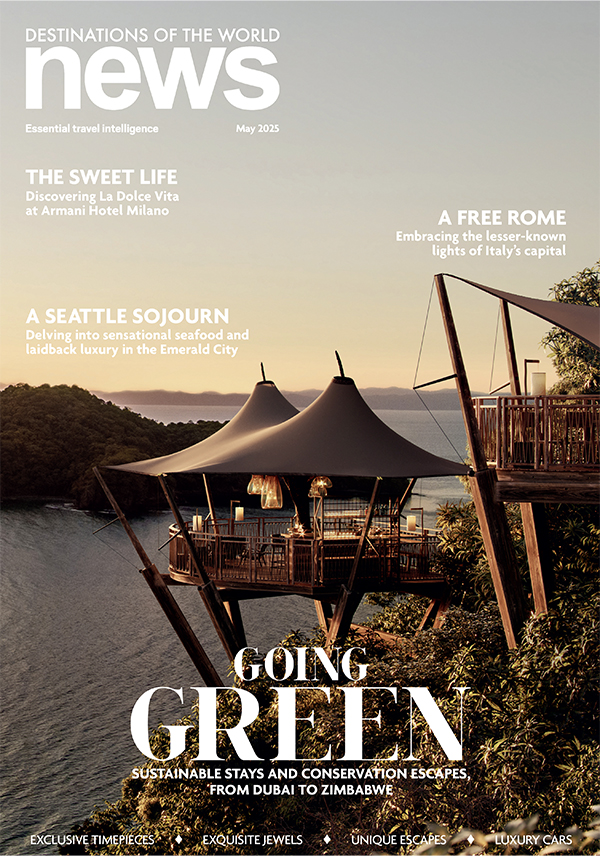It was the best of times, it was the wurst of times. It’s hard to reflect on a trip to Germany without a nod to one of its most prolific exports, and the city of Frankfurt will be eternally linked to the frankfurter würstchen (little Frankfurter sausage). But the humble hot dog is a peculiar – and quite unfair – product to be linked with when you consider that Frankfurt am Main (on the River Main) has a rich history spanning more than a thousand years. The proud city thrived throughout the Holy Roman Empire and endured 15,696 tons of Royal Air Force explosives in World War II, and first graces the history books as “Franconofurd”, where Charlemagne presided over the imperial assembly and church synod in AD 794. Although he was probably only there for the sausages.
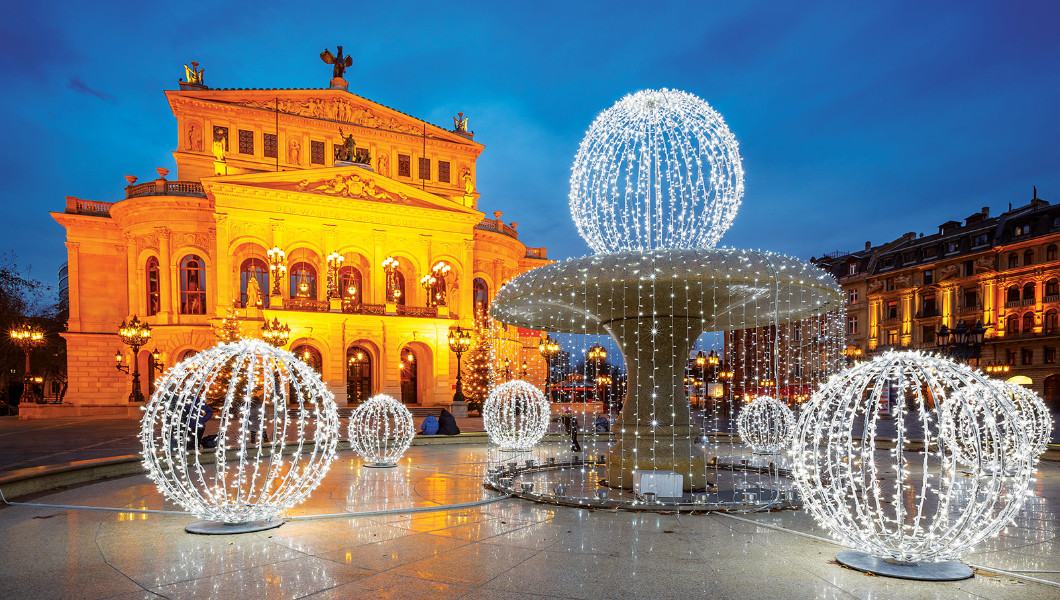
Modern Frankfurt may have been shaped by its wars and regimes, but in 2016 it’s a twin capital of finance and culture, and technically the eighth most significant financial centre in the world – a ranking that’s due to get a boost if the projected 40,000 (or so) bankers, brokers and opportunists flee London in the wake, or anticipation, of Brexit. With or without that economic boon, the city smacks of significance, in part due to the modern high-rise skyline that leers over architectural gems that predate the printing press. Those wolkenkratzers – the more pleasurable German word for skyscrapers – are the inspiration for central Frankfurt’s endearing nickname, Mainhattan. Which, as you probably guessed, is a portmanteau of the local river and a certain New York City borough.
A night at the Opernplatz
And in this former Empire State we lay our starting line. The Alter Oper (Old Opera) is Frankfurt’s original opera house (pictured above); built in 1880 and fully restored after the aforementioned hammering from the Allies. Now a concert hall, the building is the cornerstone of Opernplatz (Opera Square), connecting the banking district with the Innenstadt, or inner city, but it’s not the roster of performances that’s generating the most buzz. The real talk is centred around the new kid on the ‘platz; Sofitel Frankfurt Opera. Why the hubbub? First and foremost the box-fresh hotel is a perfectly located splash of tasteful modernity wrapped up a cosy, classic 18th-century façade. Secondly, the 150-room hotel is one of just a handful of legitimate luxury properties in the city, ranking alongside the likes of Jumeirah, Rocco Forte and a pair of Steigenbergers. The interest in the hotel from media and Frankfurters alike was so great, the spike in traffic briefly took the hotel’s website offline.
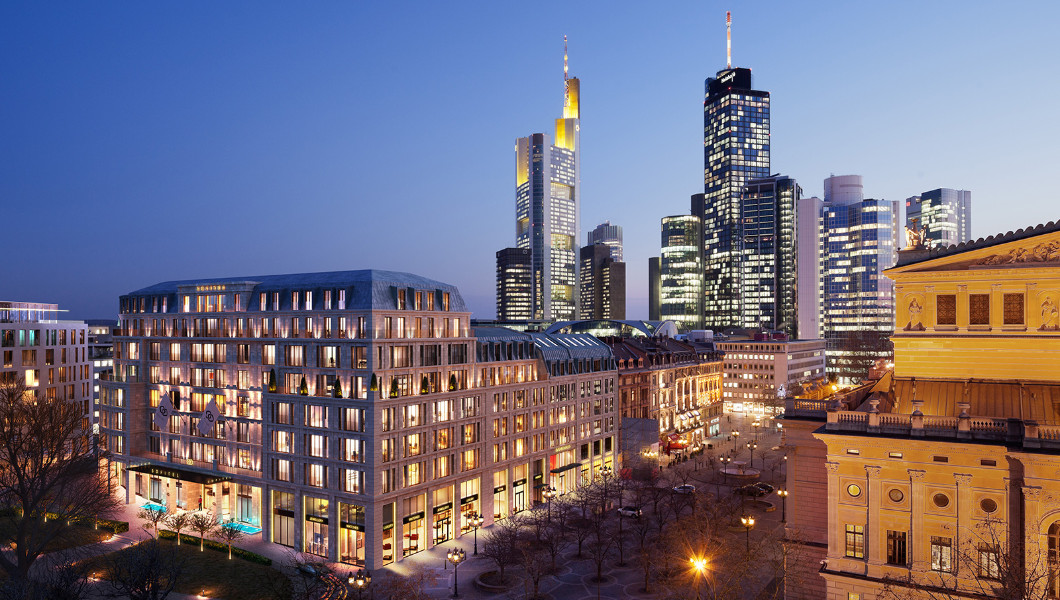
I glimpse the phenomenon myself, when I’m invited to be the first-ever patron of Schönemann, the hotel’s signature restaurant. Myself and the team (conducting a dress rehearsal of sorts) lose count of the curious lurkers and passers by peering through the ground-floor window, which have included, so I’m told, an off-duty GM from a nearby hotel who dropped by to ask for a hard copy of the dinner menu. His curious request was politely declined. The venue borrows its name from Lili Schönemann, the former fiancée of famed writer and son of Frankfurt, Johann Wolfgang von Goethe, and it will certainly inflate the impact of the hotel’s arrival with it’s own entrance and eventual warmer-weather terrace spilling onto the Operplatz.
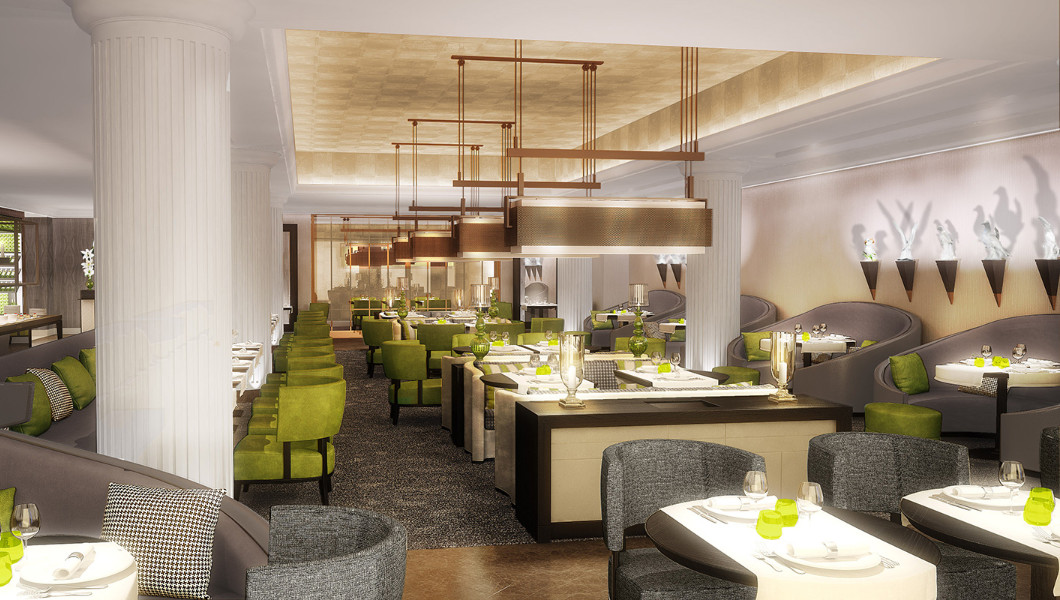
The (closely guarded) menu is a synergy of Sofitel’s French heritage with distinctly German favourites, featuring suckling piglet, cabbage rolls and a twist on duck à l’orange, replacing the citrus element with a local apple wine. To my slight chagrin, I had failed to realise the location is just an hour away from some of Germany’s finest vineyards, conveniently placed for a restaurant that’s steadily rolling in over a hundred varieties of grape.The Goethe theme is unsurprising given his former home is just around the corner, and I manage to get a glimpse of “Lili’s”, the hotel’s upcoming bar that connects to the main lobby – soon to be replete with local and international tipples with post-work libations in mind.
The not-so romantic route
One of the most gratifying elements of my stay is exploring the Innenstadt and nearby medieval neighbourhood Römer, all via a bike arranged by the efficient concierge team, but the rubber doesn’t truly hit the road until I venture out by car. Thanks to a handy partnership between Hertz and Sofitel parent AccorHotels, picking up a holiday rental is a breeze and the nearest branch only a brief Uber away at the Hauptbahnhof (central station). For this German road trip, it is a coin toss between taking the classic “Romantic Road” or arriving to the Bavarian heartland via the millennium-old city of Nuremberg. Since this trip is a solo-travel experience (and my only love affair is with the autobahn) I opt for the latter – and I’m far from disappointed.
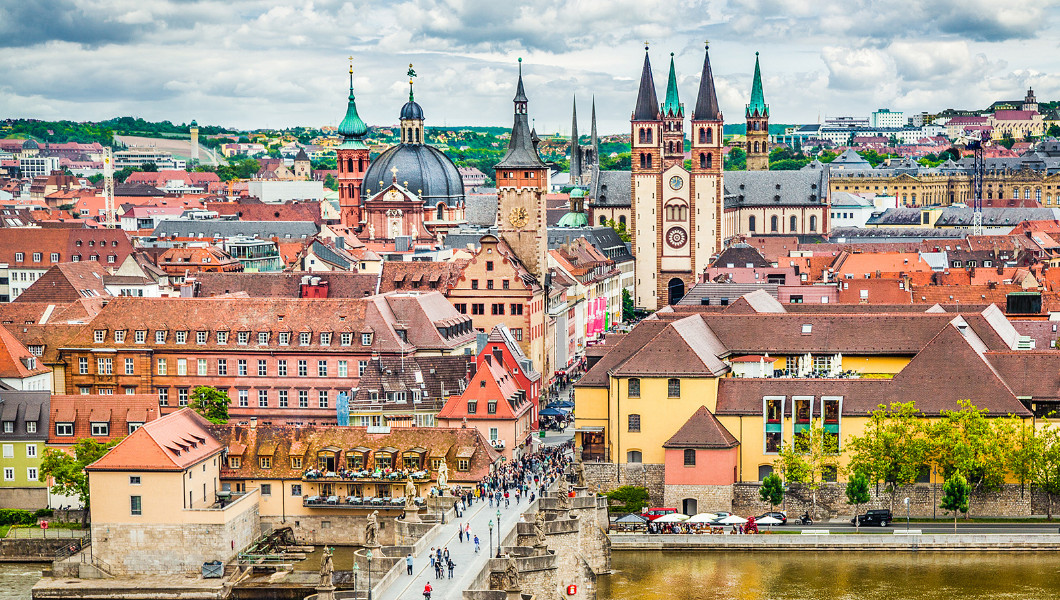
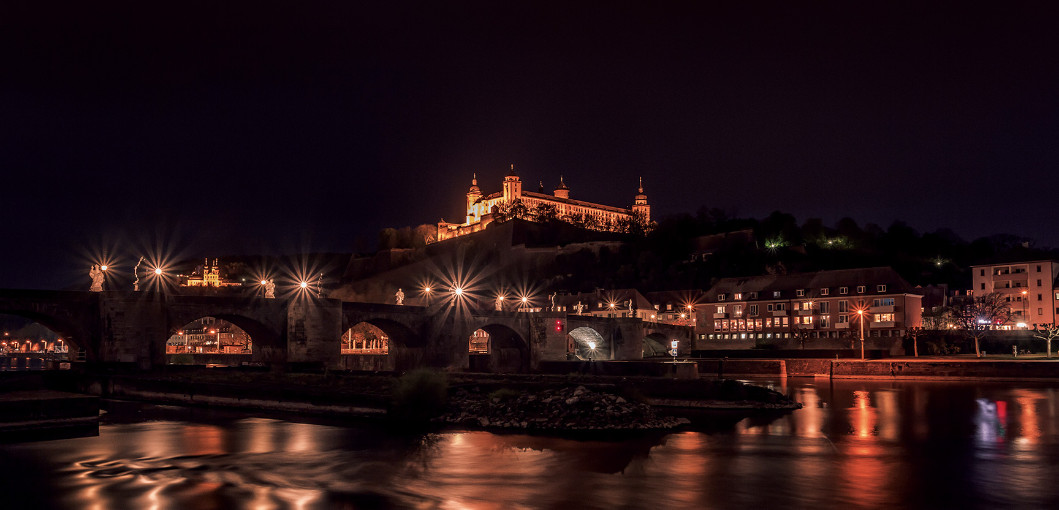
Given the laissez-faire nature of the Bundesautobahn, it isn’t long before I clock signs for Würzburg, with my GPS locked onto Restaurant & Weinhaus Stachel. The 600-year-old tavern is one of several historic gems but a glut of glowing reviews made the decision reasonably effortless; almost as effortless as blitzkrieging a plate of fränkisches hochzeitsessen – boiled veal breast in horseradish sauce, with broad and flat pappardelle and a smattering of cranberry. I should be forgiven for sampling a “small” Hefeweissbier, although it turns out to essentially be a pint. In Germany they also come in litres. Thankfully, I’m able to walk it off, ambling past modern residents in their quaint medieval surrounds, and venturing to the Main River to catch a glimpse of the stunning Fortress Marienberg as groups of friends quaff Riesling, a popular German weißwein (white wine).
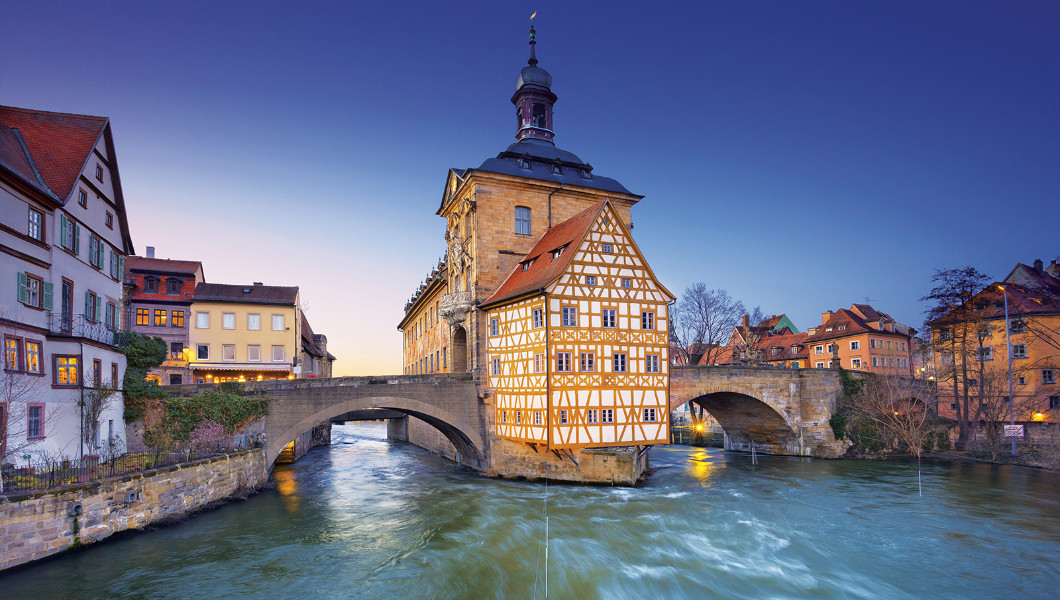
Returning to the highway, and trying everything to not let the chorus to Kraftwerk’s Autobahn repeat in my head, I continue on to Bamberg, which has been listed as a UNESCO World Heritage Site since 1993. I promised myself I would only use the “D word” once in this story, and here it is: The focal point of the town is the Disney-esque Altes Rathaus (old town hall), which straddles two adjacent bridges over the Main. In terms of the honeypot town’s magnificent heritage architecture, it’s the queen bee, but the entire surrounding neighbourhood is a time capsule, save for a few Wi-Fi hotspots and the occasional wafting selfie stick.
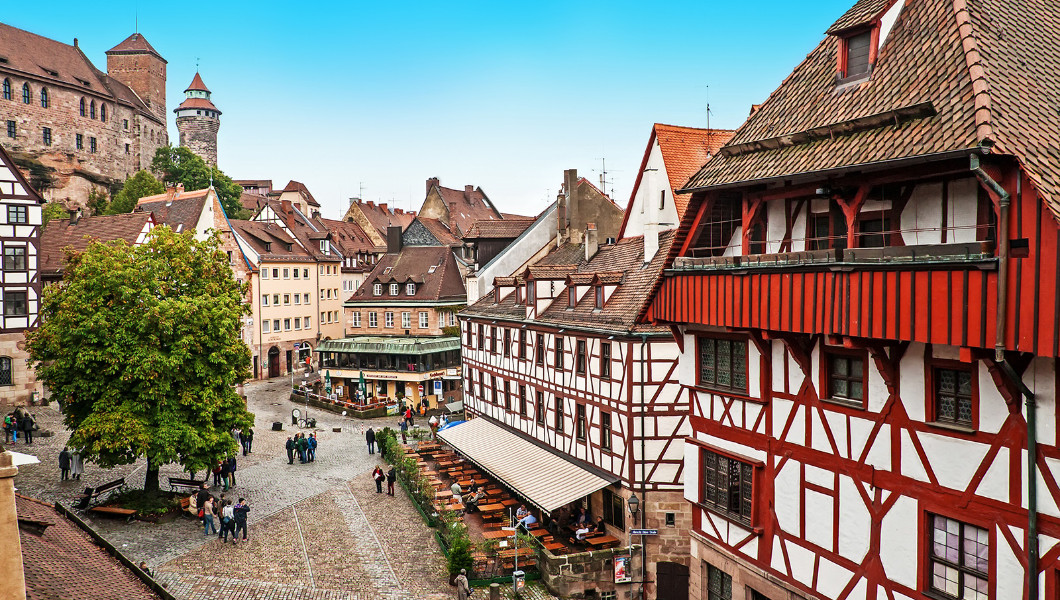
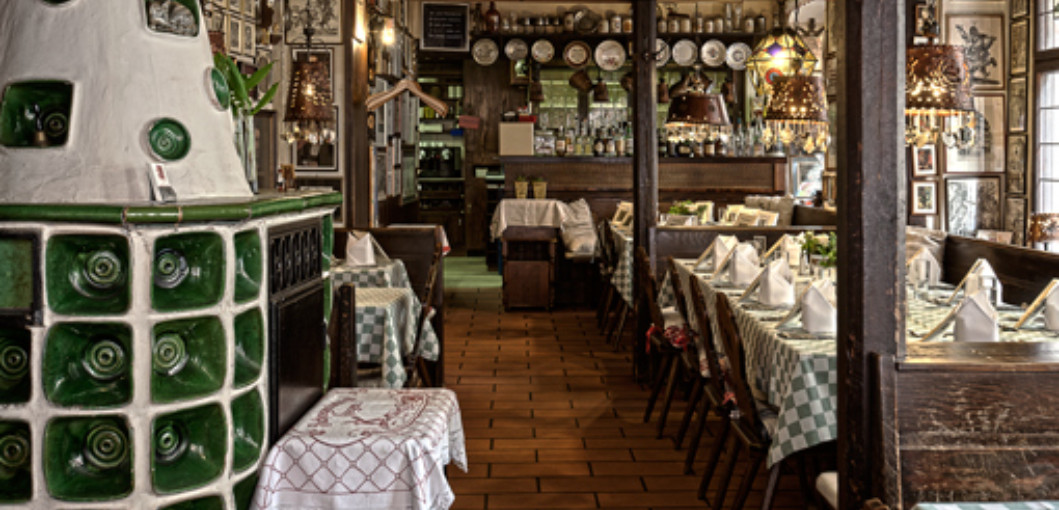
After strolling off a dark, smoky (and sample-sized) Weismainer, the twilight beginning to bronze the buildings, it’s time to rally on (if you’ll forgive the pun) to Nuremberg, for dinner at Albrecht-Duerer-Stube, where I score a table before the evening rush. In and out of season the traditional restaurant turns away potential patrons, partly due to being a bit poky and not having a great number of covers, but also because it’s a huge draw. German cuisine is an uncomplicated, hearty experience, and this place nails it in a folksy setting within the historic city walls and just a few steps from the hallowed home of Renaissance celeb Albrecht Dürer. The painter and printmaker dearly departed in 1528 but has left his mark in Nuremberg’s cobbled nucleus, with various watering holes and gift shops flashing his name and (uncannily) Christ-like image.
Munich: Weiss City
After flanking the River Main for a few hundred kilometres it is time to say auf wiedersehen and venture south to Munich, where I am ready for a suite stay at Hotel Sofitel Munich Bayerpost. After dropping the Hertz rental next to the hotel, I waste no time in ascending to the eighth floor (the hotel’s highest) to a duplex suite. The real benefit of having a lofty mezzanine bedroom is the soaring height of the floor-to-ceiling windows, flooding in natural light and offering incredible views north over München Central Station and beyond. Given its close proximity to the Hauptbahnhof, it’s clear the Sofitel would be the perfect vantage point to explore Bavaria by rail, especially since the daily unlimited “Bayern Ticket” is just 23 Euros with a gang of must-see countryside destinations in reach; Neuschwanstein Castle and the lake island palace of Herrenchiemsee to name a
couple of favourites.
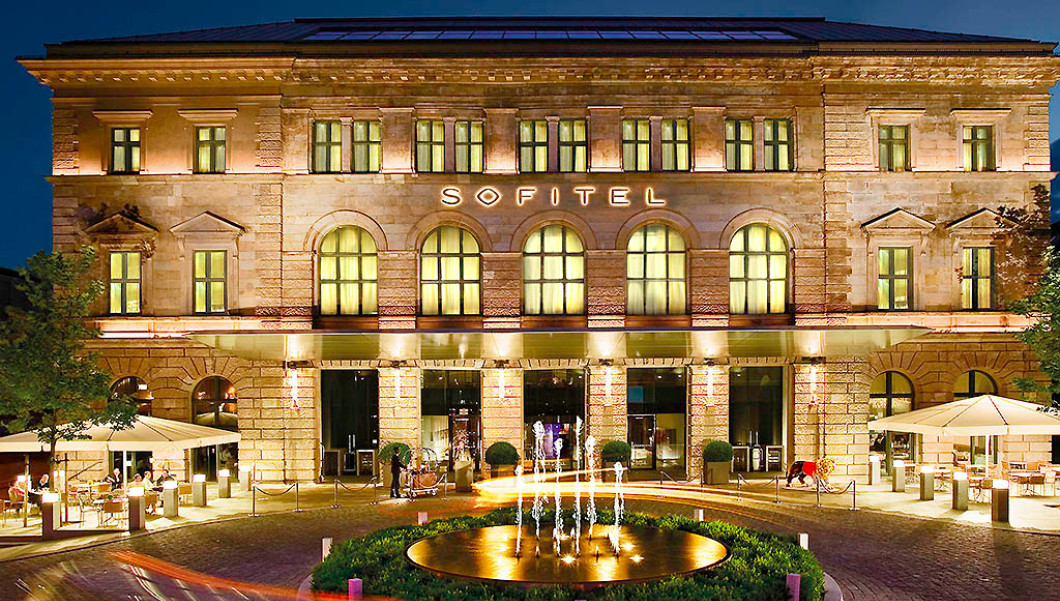
After my long drive, Munich’s Sofitel is hard to leave. Similar to its Frankfurt sibling, the Wilhelmian building (meaning 1890-1918) cloaks an ultra-stylish hotel, with subdued lighting, open spaces and cosy fabrics, and with steamy bathing at SO SPA and venues like Délice La Brasserie and ISARBAR (named from the River Isar), you’ll definitely be lulled by the urban oasis. But this, after all, is the home of Oktoberfest. If Frankfurt is wrongly famed for its “delicacy” then this is Munich’s debaucherous problem child, with upwards of five million beer swillers descending on tents such as the Schottenhamel, which has a capacity of 10,000. Despite its name, the festival wraps up by the first Sunday of October and the city has a chance to breathe before the Christmas festivities commence – and the Munich market is an institution. In fairness, the locals are probably happy to host the revellers, given the “Wiesn tents” are tucked outside the city centre, and they probably rub their hands with glee when Airbnb prices are hiked sixfold or more – the same goes for hotels.
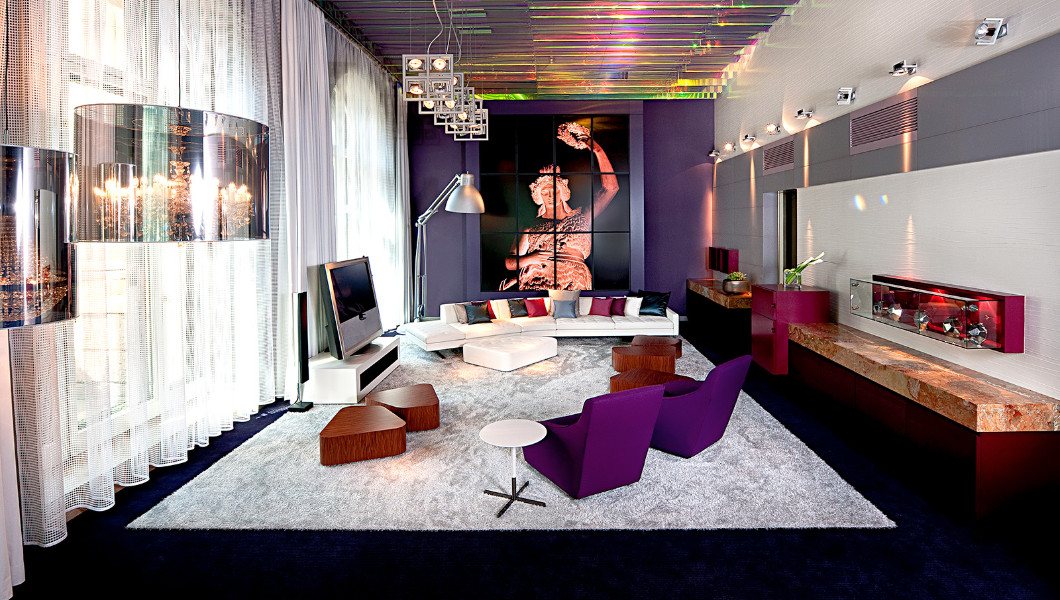
-efejc4.jpg)
The best place to start exploring the city is Marienplatz, which provides a base for a combination of cultural and retail exploits, before revealing a thriving nightlife scene after dark. As such, it’s a common meeting place for walking tours, a recommended and affordable way to unlock the city’s intricate and fascinating history (www.inmunichtours.com). Be sure to find one that includes Victuals Market, a vast daily farmer’s market that dates back to the 1800s. Unless you speak flawless German with a Bavarian lilt you should expect to pay tourist prices for any of the freshly made delicacies on display, but the sprawling market is a feast for the senses, even if you’re just window shopping. One of its highlights is the biergarten, which claims to be the only beer garden in the city to alter its hoppy offerings each season, rain or shine. But you won’t need to worry about precipitation at Hofbräuhaus, where unless you’re a dunce like me, you should make sure to pronounce the umlaut (hof-broy-haus, or thereabouts). It’s here, in the biggest and most famous beer hall in the world, where I raise a stein to Deutschland and begin plotting my next road trip.
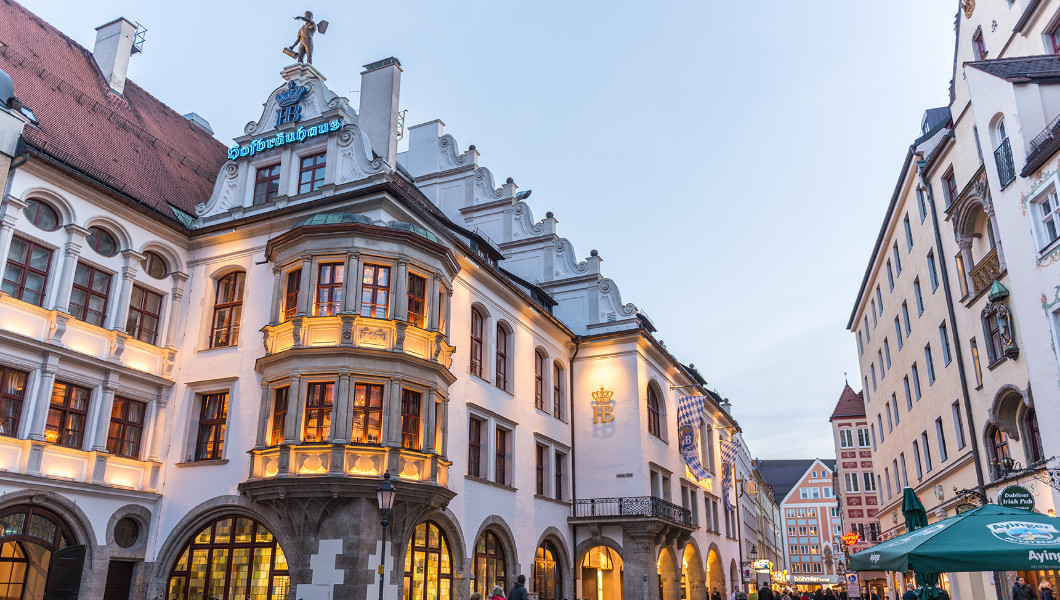

Stay:
Sofitel Frankfurt Opera
+49 69 256 6950
www.sofitel.com
Hotel Sofitel Munich Bayerpost
+49 89 599 480
www.sofitel-munich.com
